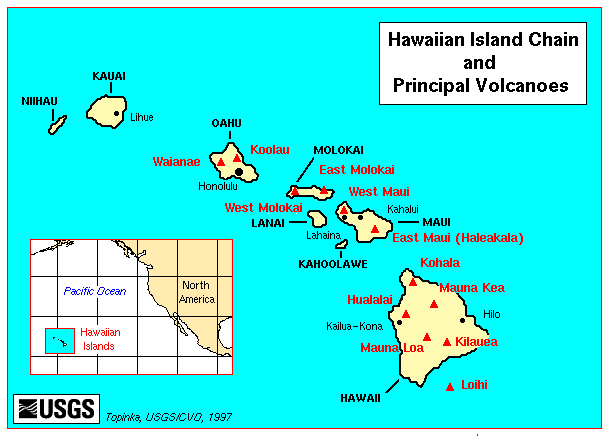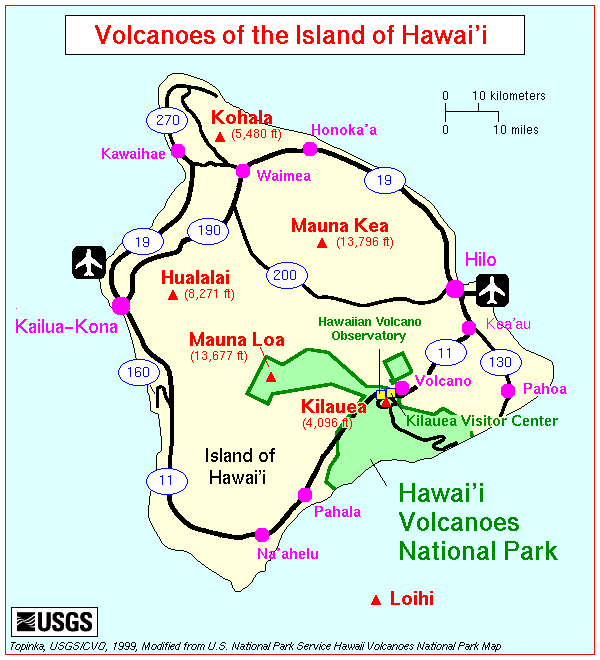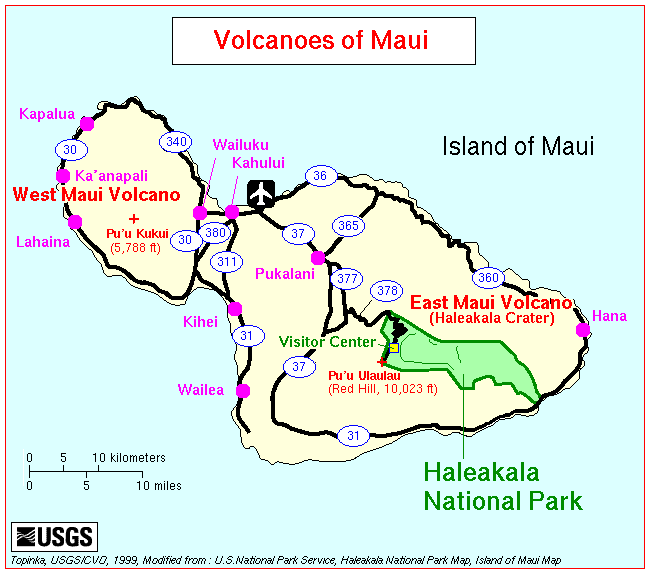
|
||||||||||||
|
|
Hawaiian Volcanoes
The Hawaiian Islands are at the southeastern end of a chain of volcanoes that began to form more than 70 million years ago. Many of these volcanoes formed islands that have subsided and eroded beneath sea level, and some of the old volcanoes probably never reached sea level. Each Hawaiian island is made of one or more volcanoes, which first erupted on the sea floor and only emerged above the ocean's surface after countless eruptions.
The largest and most southeastern island of the chain, Hawaii, consists of five volcanoes. Kilauea, Mauna Loa, and Hualalai have erupted in the past 200 years. Lo`ihi, the youngest volcano of the Hawaiian Volcanic Chain, is still about 1,000 meters beneath the ocean's surface. East Maui Volcano, commonly known as Haleakala, on the island of Maui, is the only other Hawaiian volcano to have erupted since the late 1700's.
|







